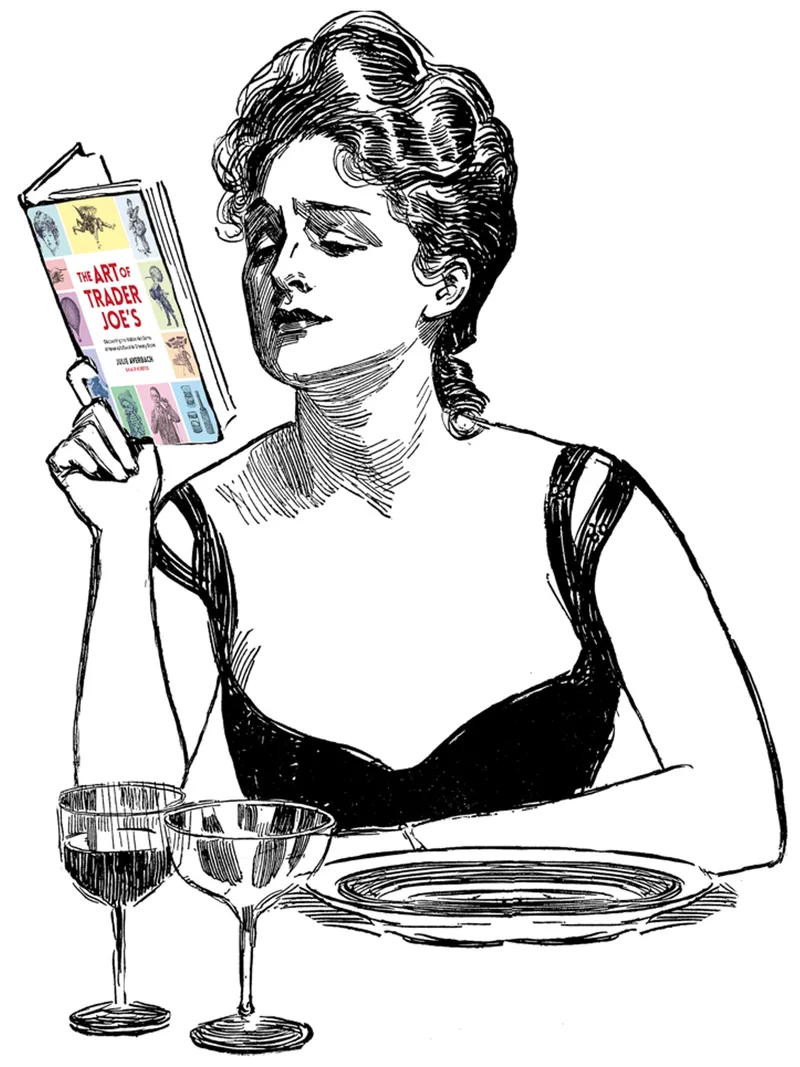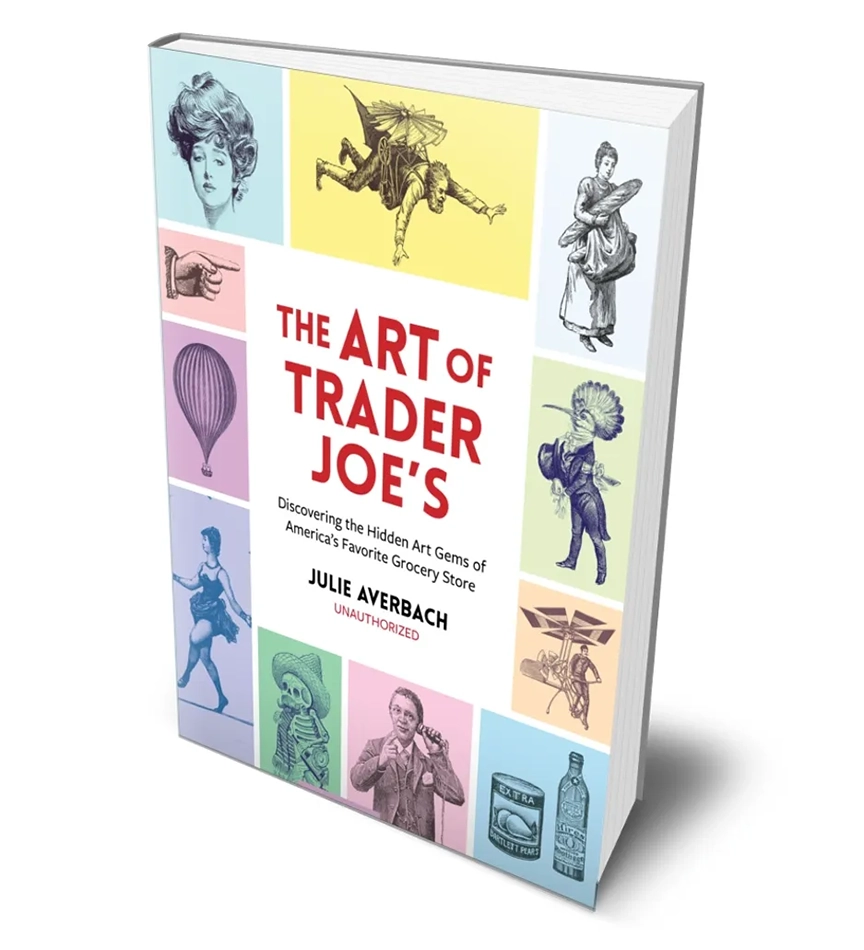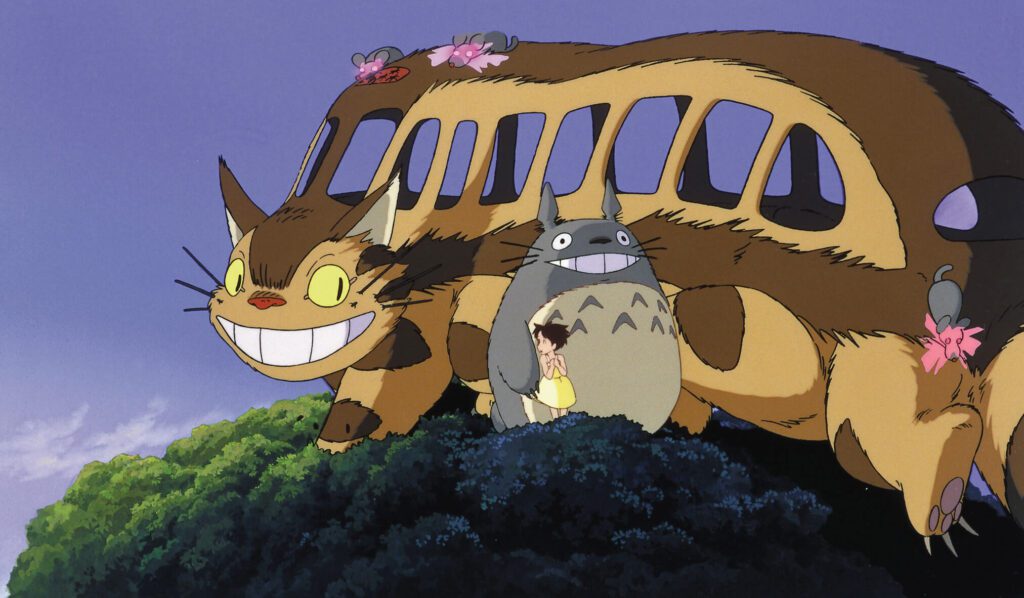Review of “The Art of Trader Joe’s: Discovering the Hidden Art Gems of America’s
Favorite Grocery Store,”
by Julie Averbach
Review by Michael Quinn
I don’t know anyone in the city who doesn’t shop at Trader Joe’s. Even if you dread the crowds, you may go for the low prices.
While I’m not generally a fan of chain stores, there are quite a few things I like about this one: the assortment of products from around the world, the wide range of organic items and the seasonal arrivals that make each visit feel special.
When Christmas rolls around, I look forward to Candy Cane Green Tea (green tea infused with peppermint), Wintry Blend coffee (a mix of peppercorns, cinnamon and cloves) and waxed amaryllis bulbs — watching something grow during the dark days of winter is a real balm to the spirit.
Even when the store is packed, it feels well-run. An air of cooperation, helpfulness and often cheerfulness reigns supreme. Once, I interrupted a worker stocking shelves to ask where the mustard was. Without hesitation, he jumped up and ran to get it for me — ran.
Have you ever had that experience at Gristedes?
The hierarchy of traditional grocery stores
When I was a teenager, I worked in a small grocery store on Long Island. Four aisles, but they stocked everything. We were assigned individual sections — produce, dairy, frozen foods and the like — and were well trained to become experts in everything within our area. Once we’d proved ourselves proficient and reliable, we were trained to ring up sales.
In many traditional grocery stores, there’s a hierarchy. At the bottom are the stock people— the ones who take in the deliveries and put things on the shelves. These “physical” roles are often assigned to men.
At the very top are the cashiers — the ones who can deal with customers and be trusted with the money. These roles are often given to women.
Cross-training and cooperation at Trader Joe’s
At Trader Joe’s, they cross-train. One shift you unload the truck, another you stock shelves and another you ring up customers.
I think this gives the workers an appreciation for all the roles and contributes to the cooperative feeling. They pitch in to help one another.
I also like how diverse the workforce is: so many different faces — and ages!
Julie Averbach, on the other hand, is drawn to the artwork.
In fact, she likes it so much, she wrote a whole book about it.

An artistic and historical take
Averbach studied art and history at Yale. Her thesis — “Collecting Worlds: Trader Joe’s as a Contemporary Cabinet of Curiosities”—serves as the basis for her new book, “The Art of Trader Joe’s.”
While different stores share similar aesthetics, no two are the same. Averbach visited over 150 (of the 580 nationwide) to analyze what makes them unique (her favorite is also the busiest one, on Broadway and 72nd St.).
Once you start looking, you see art everywhere in the store, from the hand-painted signs and murals to the pictures on the brown paper shopping bags.
Art equals big business
The “original Trader Joe,” Joe Coulombe, opened the first store in 1967 in Pasadena, California. He designed the niche specialty foods store with a nautical theme to evoke an around-the-world adventure. Even today, employees are called “crew members” and managers are called “captains.” Surely, you’ve heard someone ringing a bell near the registers—I’ve always wondered what the different rings mean.
Trader Joe’s keeps many things under wraps — including its earnings. As a private company, it doesn’t share this information publicly, but Averbach calculated the number, as of 2021, to be around $16.5 billion. (Judging from some of the checkout lines, I can believe this number is even higher.)
Over 80% of Trader Joe’s products are ones they make themselves. Cutting out the middleman saves money. But instead of using generic packaging to communicate that these items are cheaper than their name-brand equivalents, Trader Joe’s develops unique packaging for each product it carries.
A trip down the aisles takes you around the world
While the company has always prided itself on selection, pricing and customer service, Averbach argues that its aesthetics are another key ingredient to its success.
In-house artists create much of the artwork we see in the stores. These artists range from full-time professionals to regular employees—the same ones who help us with our shopping.
Averbach sees each store as “a cabinet of curiosities” — a collection of interesting things from around the globe, carefully curated into displays. She points out that in most chain grocery stores, “ethnic foods” are limited to one or two aisles. At Trader Joe’s, you can find international products throughout the store.
Their displays often evoke a feeling of abundance—though if you shop on 14th St. near Union Square, you’ve probably encountered empty shelves wiped clean by all the students at NYU.

A closer look at some iconic packaging
Averbach gives us a detailed look at several Trader Joe’s mainstays: tubs of Crumbled Feta, adorned with Ionic columns from classic Greek architecture; boxes of English Breakfast Tea, with its red tartan plaid giving a sly nod to the punk rock ethos of Vivienne Westwood; and the Victorian cartoons on the shopping bags and in the pages of its pun-filled circular, The Fearless Flyer.
Why Victorian cartoons? In the beginning, it was because this artwork was copyright-free. Now it’s part of the brand’s identity. The artwork often shows a dignified-looking person with a cartoon bubble saying something absurd. Averbach writes, “Like a good meme, the humor…lies in blissfully taking things out of context.” The vibe is very “egads!”
Trader Joe’s sensibility lies squarely in the realm of dad jokes—it’s a little cringey, but you smile anyway. Think about the Hawaiian shirts they wear. Goofy, but they’re in on the joke.
Too good to be true?
Given the age we live in, where nothing is as it seems —is Trader Joe’s too good to be true? Averbach’s book is unauthorized, meaning they had nothing to do with the book. What’s really going on below deck?
Like the ringing bells near the registers, what comes through loud and clear in “The Art of Trader Joe’s” are Averbach’s impressive art chops and her deep appreciation for the brand.
Her book encourages us to look at the store — and the things in it — in a new way. And looking for beauty where you least expect to find it is good advice, no matter where you shop.
While you won’t find the book for sale at Trader Joe’s, you can pick up a copy at the Strand — the least we can do, while reading about a chain, is support an independent retailer.




Great article can’t wait to go to Trader Joe’s to have a new look!